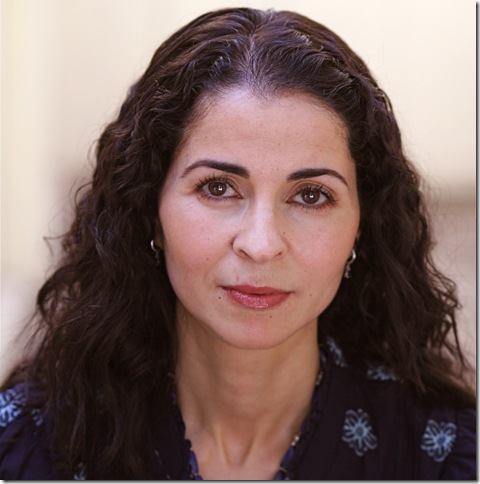By Myles Ludwig
The cultural construct of the Other is a convenient paradox. On the one hand, the Other allows us to individuate ourselves and stake a personal claim on our own identity.
One the other hand, in the best Talmudic tradition, it’s a pretty handy hat rack for our top-of-the-mind hates, prejudices, laments of every kind and description based on race, class, hair color, and nose-length, whatever.
If the hat fits, wear it. Bowler, boater or fedora: Any difference will do.
It’s always “the Other,” never us. “The devil made me do it,” as Flip Wilson used to say, a black man masquerading as a black woman for the sake of irony.
“I am the Other,” said Laila Lalami, when I asked the Moroccan-born author, a sprightly slip of a girl (no ageism or sexism intended here; at my age, everybody under 60 is a kid to me), commentator and writing professor and linguist whose careful annunciation is nearly unaccented, except for the very word “other” which she pronounces as “udder,” why she chose the character of the Other, who becomes yet another Other, to tell the epic story of Spanish exploration in Florida.
It’s a saga based on the 16th century travelogue of misery and savage survival of Álvar Núñez Cabeza de Vaca and his motley crew of wannabe conquistadors that Lalami took as the framework for her current novel, The Moor’s Account.
Actually, it’s a triple-play, since this character, Mustafa, born a free and educated black man who is a Muslim, sells himself as a slave in order to feed the other members of his family during a period of great famine in Morocco. And he joins the expedition, or rather is seconded to it, in the role of both slave and translator, a translator of indigenous languages he picks up along the way. Hegel would be proud of and maybe perplexed by this invention, since the master becomes the slave who becomes the master.
This is certainly history as fiction in a hall of cracked mirrors.
Reborn and renamed Estabanico by his owners, he is the consummate stranger in a strange land, the first Black Muslim to tell an epic story of the exploration of America. Both Freud and Jung would have a field day with this character.
Now, in our time, since 9/11, the Other flavor of the zeitgeist has been the dark and stormy Muslim, the bête noire of choice, a fact of which Lalami has been most cognizant.
“Some of us are more visible by virtue of beards or head scarves. Others are less conspicuous, unless they give book talks and it becomes clear that they, too, identify as Muslims,” she wrote in a New York Times Magazine article about living in the “Gray Zone,” a shady territory she shares with her less observant co-religionists, those who are not rolling heads.
Lalami spoke last week to a receptive audience in the Schmidt Family Center for the Arts as part of the Authors and Ideas program of the 10th Annual Festival of the Arts Boca. The festival was pulled together by Wendy Larsen and Charlie Siemon with Cynthia Brown, who was the point of the spear in snaring emerging authors, many of whom would happily spend a couple of Boca days signing and selling a few real books with real pages in the increasingly ephemeral world of virtual literature.
She had woven the fabric of the tale from a few threads she came across in her research and developed the story from there. “There are facts,” she said, and there is the story.”
The facts are the framework of this novel of identity and transformation in which the conquerors become the conquered, but the story, the melody, of the novel is hers.
“History,” she said,” is an argument.”
We were sitting at a table in the foyer of the Schmidt Family Center for the Arts, drinking a glass of wine and munching media food, chocolate chip cookies.
“It is sometimes a brutal book,” Larsen said.
If you had to boil it down, I asked Lalami (one of those impossible media questions), what would you say you want people to take away from your book.
“You have to question history,” she answered assuredly.
